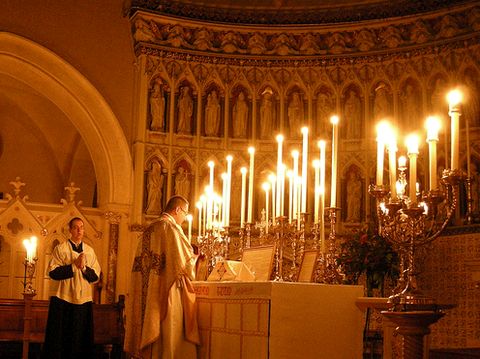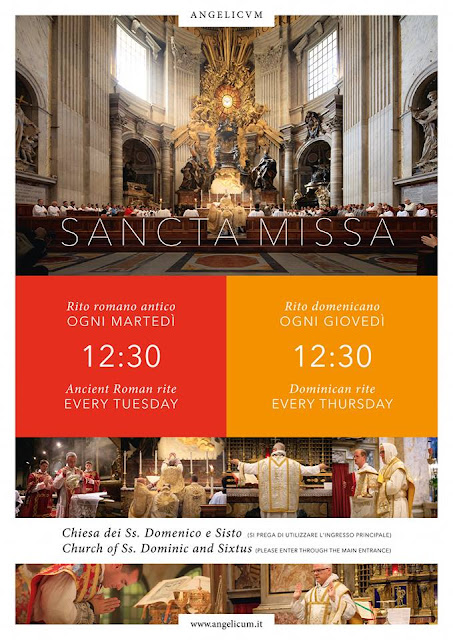The former SSPX leader on youth ministry, his encounters with Pope Francis and why the Old Mass is enjoying a revival
With his high forehead, cleft chin and old-world manners, Bishop Bernard Fellay has a definite aura. At Angelus Press’s annual Conference on Catholic Tradition in October, I watched as laymen, priests and Religious approached him, hoping to kiss his ring. He offered his hand with neither condescension nor embarrassment (both of which are more usual with bishops today).
But he isn’t aloof, either, which is another common episcopal vice. I saw him offer his hand to a one-year-old; Fellay and the child’s mother looked surprised when the child, too, kissed his ring. He walked away, and she offered her own hand, but the baby wouldn’t kiss it. Every now and then, Bishop Fellay would glide back over and offer his hand; each time, the child kissed his ring the prelate gave the mother an amused and approving grin.
It was exactly three decades ago that Bishop Fellay was consecrated at Écône as a bishop by Archbishop Marcel Lefebvre, a leader of the Second Vatican Council’s conservative faction and the founder of the ultra-traditional Society of St Pius X (SSPX). From 1994 until this past July, Bishop Fellay served as the SSPX’s superior general.
I sat down with the bishop the day before Pope Francis canonised Pope Paul VI, who promulgated the post-Vatican II reforms which Lefebvre and his followers so strenuously opposed. “He was called ‘our Janus’ by John XXIII, and that’s what we see,†Bishop Fellay says of Paul. “We see good points, and we also see bad points.â€
He doesn’t believe that the Vatican’s intention was to honour Paul VI himself. Rather, “the impression we have is that there is a need to canonise Vatican II. They canonise the pope who made the Council, because this Council is so different from the others. They can’t have it under the seal of infallibility by itself and so they try to find a way to secure it by these side actions.â€
But despite his “canonising the councilâ€, Bishop Fellay takes a kindly view of the Holy Father. He quotes Francis as saying to him: “Some people in the Church aren’t happy when I do good to you. I tell them, ‘Listen, I do good to Protestants. I do good to Anglicans. Why shouldn’t I do good to these Catholics?’ He read twice the biography of Archbishop Lefebvre, and after that he said to one of our priests, ‘You know, they have treated them badly’.â€
Anyway, Bishop Fellay believes that Lefebvre’s work will continue to bear much fruit. “What he gave us is the treasure of the Church,†he says. Can he imagine Lefebvre being canonised, too? “I think one time it will come,†he replies. But “it’s useless to try to push that. We say, ‘God’s hour’, and you cannot play before.â€
In any event, Lefebvre’s influence throughout the Church is already evident. Without him, the Old Mass would almost certainly have fallen into disuse. Today, diocesan priests who celebrate the Latin Mass can be found in every major city in America and Europe. Their parishes are full of big, young families. But does this not threaten the SSPX, whose raison d’être is to keep the old rites alive? Bishop Fellay doesn’t think so. “Fundamentally, we have the same spirit,†he assures me. “The attachment to the Mass of centuries is a guarantee of community – and, more than that, of being the Church. So, I rejoice every time a Tridentine Mass is celebrated anywhere in the world.â€
But why exactly are young Catholics drawn to the old Mass? “At the risk of sounding a bit funny, it’s obvious why,†he says. “This Mass is the concentration of the Catholic spirit, of Catholic religion. This Mass is not just liturgy, because it is genuine liturgy. You’re nourished from beginning to end. It is the Catholic spirit in action. You are drawn into the adoration toward God. The first duty of man toward God is to worship Him, to adore him. And there you are! Now there, too, you’re put in your place: begging forgiveness for your weakness, your sins, and for His help. And, so, you have the whole of the Catholic faith.â€
Still, he fears for those who aren’t nurtured by tradition. “There is a problem with the youth,†he says. “Why is it that the teaching Church is facing such an ignorance among their own children about the faith? That’s a major problem. If you want the youth to be motivated, they first must be convinced. They must be taught.
“Preach the faith, but preach it fully, integral – not half-ways,†he urges his fellow priests. “There’s too much of this trying to please this world. We’re not there for that. We’re there to communicate to man God’s word, God’s law, God’s commandments, God’s love. This will be efficient if these words are accompanied by the corresponding example. And then the ideal, the Christian ideal, will come by itself. Vocation – that is, God’s call – it’s there. God is not mute.â€








